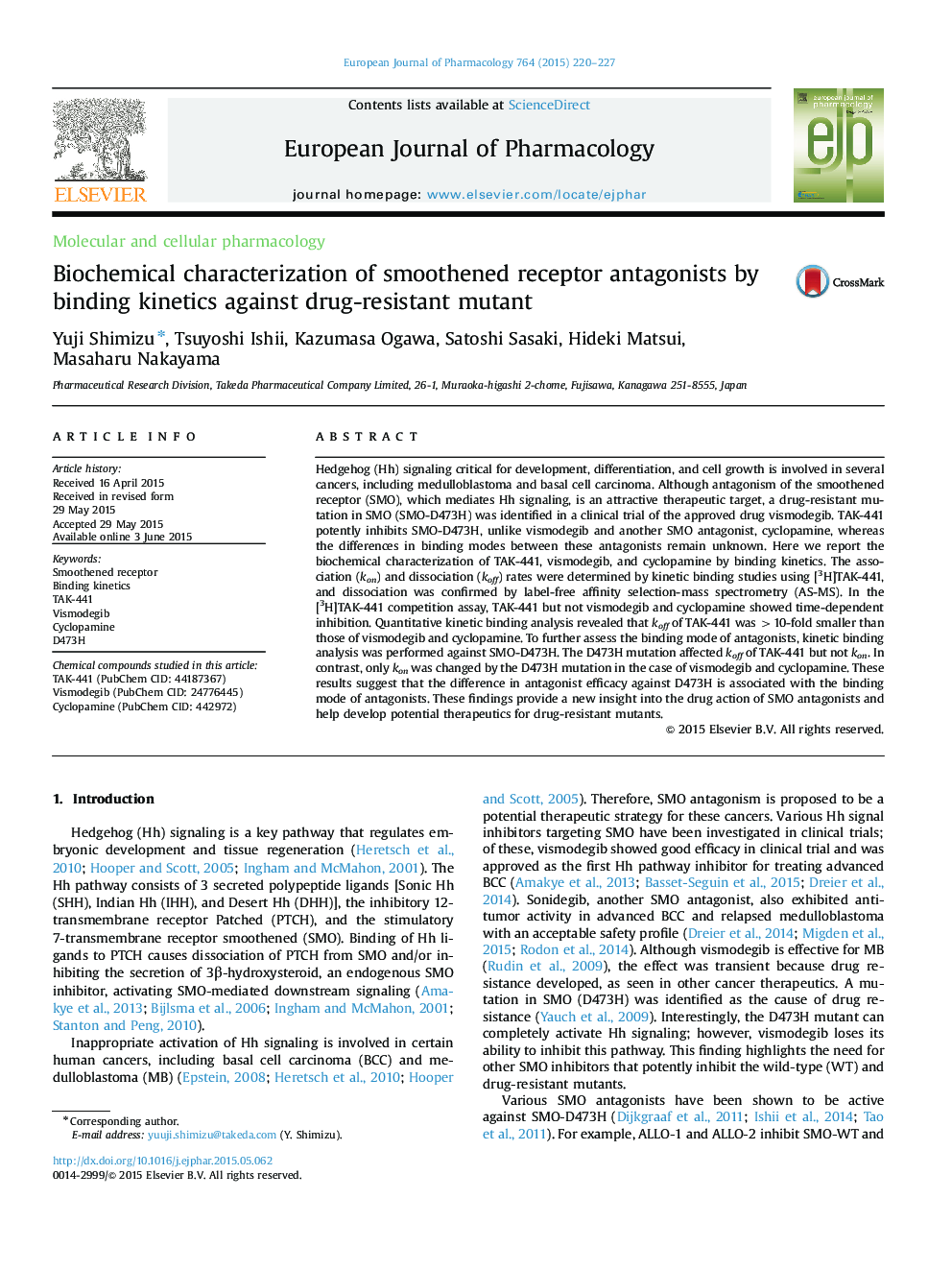| Article ID | Journal | Published Year | Pages | File Type |
|---|---|---|---|---|
| 2531324 | European Journal of Pharmacology | 2015 | 8 Pages |
Hedgehog (Hh) signaling critical for development, differentiation, and cell growth is involved in several cancers, including medulloblastoma and basal cell carcinoma. Although antagonism of the smoothened receptor (SMO), which mediates Hh signaling, is an attractive therapeutic target, a drug-resistant mutation in SMO (SMO-D473H) was identified in a clinical trial of the approved drug vismodegib. TAK-441 potently inhibits SMO-D473H, unlike vismodegib and another SMO antagonist, cyclopamine, whereas the differences in binding modes between these antagonists remain unknown. Here we report the biochemical characterization of TAK-441, vismodegib, and cyclopamine by binding kinetics. The association (kon) and dissociation (koff) rates were determined by kinetic binding studies using [3H]TAK-441, and dissociation was confirmed by label-free affinity selection-mass spectrometry (AS-MS). In the [3H]TAK-441 competition assay, TAK-441 but not vismodegib and cyclopamine showed time-dependent inhibition. Quantitative kinetic binding analysis revealed that koff of TAK-441 was >10-fold smaller than those of vismodegib and cyclopamine. To further assess the binding mode of antagonists, kinetic binding analysis was performed against SMO-D473H. The D473H mutation affected koff of TAK-441 but not kon. In contrast, only kon was changed by the D473H mutation in the case of vismodegib and cyclopamine. These results suggest that the difference in antagonist efficacy against D473H is associated with the binding mode of antagonists. These findings provide a new insight into the drug action of SMO antagonists and help develop potential therapeutics for drug-resistant mutants.
Graphical abstractFigure optionsDownload full-size imageDownload high-quality image (130 K)Download as PowerPoint slide
